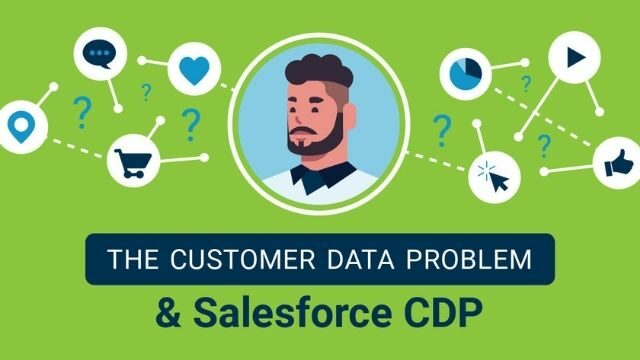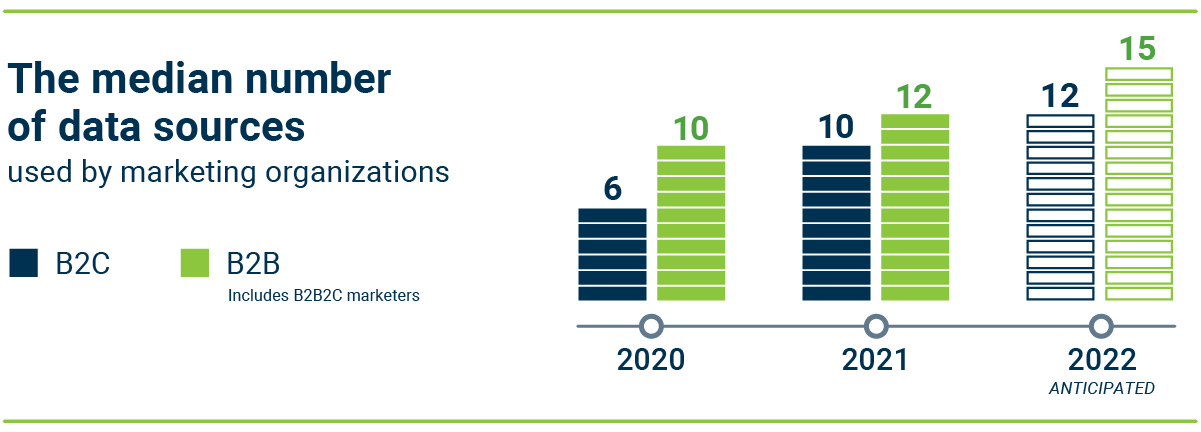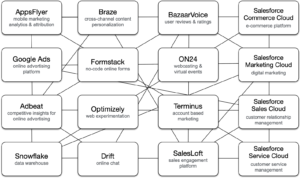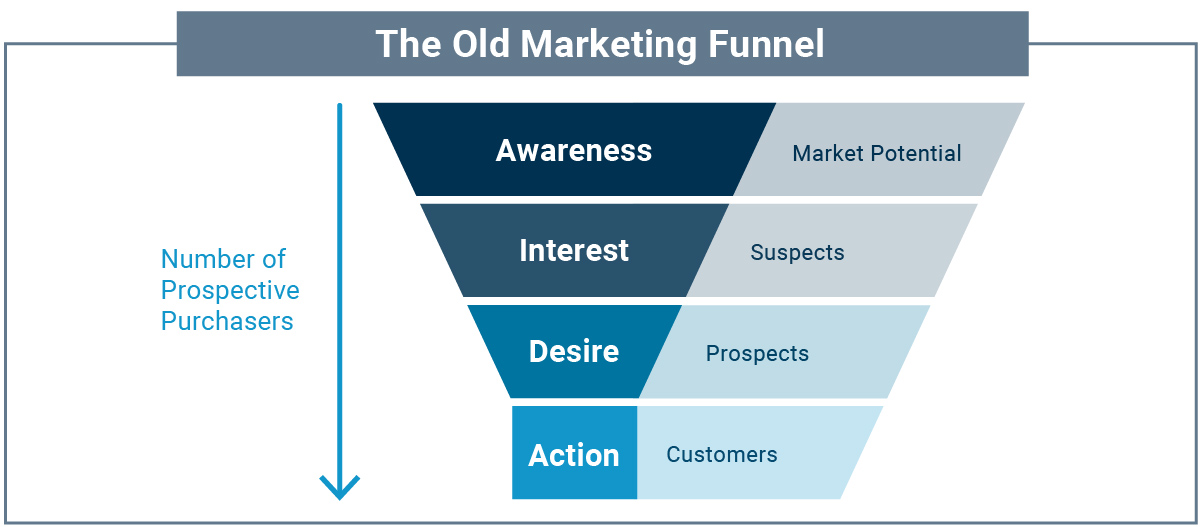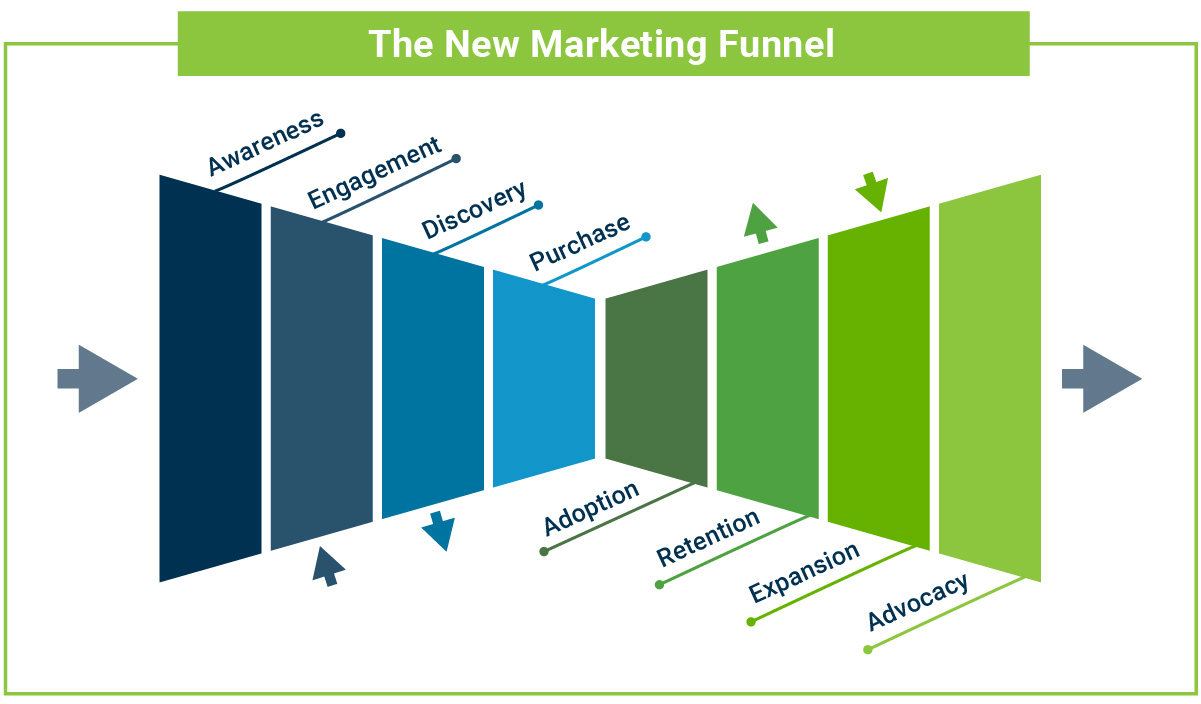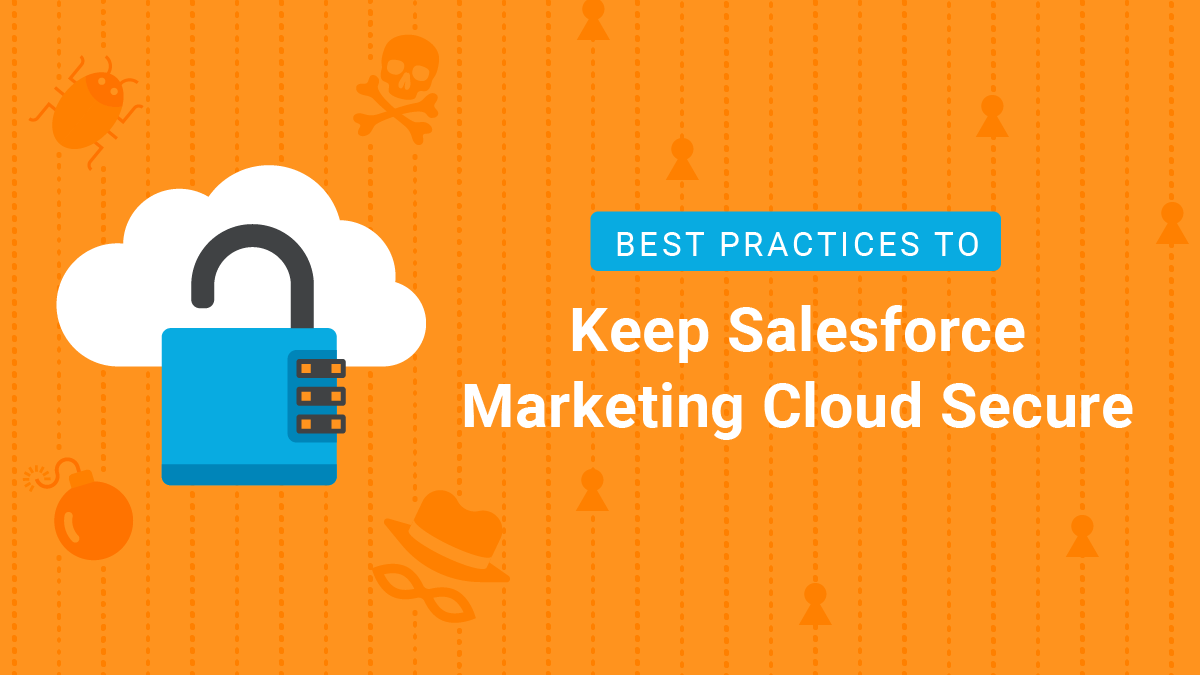The CDP acronym has emerged in recent years as yet another must-have TLA (or ‘three letter acronym’) that every marketing team simply cannot live without. In this article, I explain what exactly a Customer Data Platform is, why you might actually need one, and how Salesforce is working to redefine CDP.
Show Me the Data
The biggest problem that marketers face is data. While customer and behavioral data exists, it’s very fragmented and the systems that manage this data were actually built for a different era. Customer data resides in CRM, purchase data in a point-of-sale system, web data in another system, and so on. And the number of data sources is on the rise. The median number data sources used by B2C marketing organizations in 2020 was 6, then 9 in 2021 and is forecast to increase to 12 next year, with an even greater increase in B2B data sources.
Average number of data sources used (source: Salesforce State of Marketing 7th Edition)
These disparate platforms contain a rich source of customer and behavioral data, which is all very nice, but it’s not actionable. Until you are able to integrate the data sources, you can’t act on that data. For example, you won’t be able to send an abandoned cart email to customers who don’t complete an online purchase, or nurture website visitors who have completed a form, until you connect data sources together.
But integrating disparate data sources is difficult and integration demands are steadily increasing — a recent study reveals the vast majority (87%) of organizations find that integration issues are a hindrance and slow down digital transformation initiatives (source: Mulesoft 2021 Connectivity Benchmark Report). The diagram below illustrates a marketing technology stack that we typically see and the connectivity requirements required before data can be actionable.
Platform connectivity requirements in a marketing technology stack
Even if you’re able to unify siloed data sources, you still need to segment your data into identifiable and addressable audiences. Many marketers enlist the help of their IT team to build complex segmentation models using SQL, where a database administrator can literally knock themselves out. While SQL is an extensive declarative language, it’s not a language of marketers. It’s a specialist discipline that not only requires familiarity with the language’s vocabulary, but also knowledge of optimized database design and query design patterns. Oh, and you need to wait for the data to finish processing before you can use it — forget about getting this data in real-time, or even near-time.
The New Marketing Funnel
The classic cone-shaped marketing funnel has one objective: to get your audience from a prospect to a customer. It works by filling it with as many leads as possible and hoping for the best as they squeeze through and drop out the bottom as a new customer.
But the funnel has changed. All the stages are still there, but they don’t look like they used to. Instead of the traditional cone shape, it now more resembles an hourglass. Digital technology and mobile devices have put consumers back in control. Someone who is buying a new camera might start with an online search of current models, or read a buyers guide on what features to look for, then read customer reviews after narrowing their search, before watching videos of user-generated content and making a purchasing decision. Once they’ve purchased, they might leave their own review or share their experience with friends on social media.
Marketers still have to generate leads, then nurture interest, desire and action, but not necessarily in that order, and not definitely not using the same tactics. The traditional segmentation approach simply doesn’t fit anymore, as leads can enter the funnel at any stage, so audiences need to be highly pliable.
What’s more, consumers now expect more than a personalized experience, instead they want every brand interaction to be a connected experience that matches their actions and behaviors, based on in-the-moment data. Like immediately triggering emails based on a recent website engagement or an in-store purchase. And to do this, you need to know exactly how they’re interacting with your channels and content.
What a CDP Is
At the risk of massive oversimplification, a CDP is a database for marketers. Specifically, it’s a purpose-built, self-service database where marketers can digest all siloed customer data, build unified customer profiles, and make these profiles actionable to any engagement platform, like Salesforce Marketing Cloud.
What a CDP Is Not
A CDP isn’t a customer relationship management (CRM) platform. You would be forgiven for assuming that it is, as they both store customer data, but that’s where the similarities end.
CRMs are used for managing customer relationships and sales engagements, pipelines, customer interactions, business transactions and facilitating sales and service processes. And by design, a CRM is built for storing known customer data, which must conform to a rigid schema.
A CDP, however, derives customer data from disparate sources, including first and third-party data, structured data, semi-structured data, unstructured data, website and mobile app session data, and more. And this data needs to be updated and accessible in real-time. Sounds reasonable? Just ask your IT team for all that and let me know how you get on.
| CDP | CRM |
|---|---|
| Data access and integrations managed by marketers | Data access and control managed by IT team |
| Collects data on known and unknown (anonymous individuals) | Collects data on known leads or contacts |
| Reports on customer lifecycle behavior | Reports on sales activity and forecasting |
| Flexible and adaptable data model | Very strict schema |
And a CDP isn’t a marketing platform either. While most digital marketing platforms can perform extract, transform, load (ETL) processes on data from external sources, they can only run as scheduled batch processes. By design, they heavily rely on a notion of a ‘Subscriber’ (or a similar noun) to represent a known individual (who has a name and an email address), not an unknown one. And if an individual is unknown, then they simply don’t exist.
| CDP | Marketing Platform |
|---|---|
| Effortlessly performs ETL processes on big data | Relational databases, not designed for big data |
| Create complex segmentation without database or programming skills | Programming skills to achieve complex segmentation |
| Uses both unknown and known data for individuals | Only uses data for known individuals |
| Flexible and adaptable data model | Very strict schema |
Salesforce CDP
The CDP market is already well established, of which many key vendors have pivoted out of other industries like tag management (for example, Tealium, Segment and mParticle) and adapted their platforms to offer CDP functionality. However, Salesforce has built their CDP platform from the ground up and by doing so, has had the unique opportunity to embed core CDP functionality into the platform architecture and design, rather than bolting them on as an afterthought. Salesforce CDP includes four core functional areas, which can be summarized as:
- Unify & Identify data from Marketing Cloud, Sales and Service Cloud and other external platforms. This data is then unified through data mapping and identity resolution rules to create a ‘golden customer record’.
- Segment data and build complex segmentation criteria using a ‘clicks not code’ approach in an intuitive interface
- Manage consent of individuals by leveraging the highly canonical data model from Salesforce Consent Management objects to manage every aspect of an individual’s consent, enabling marketers to track who provided consent, how they provided consent and what they actually consented to
- Activate segments and inject them into Marketing Cloud Journeys
While Salesforce CDP is still quite new, Salesforce has an ambitious platform roadmap which most notably includes the ability to use a single segmentation engine to link both known and unknown data using data from Advertising Studio and Interaction Studio.
Summary
Unifying siloed datasets to create that elusive single customer view and truly understand every aspect of your customer is something that has been the Holy Grail of marketing for over three decades and has been shunted into the too-hard basket, until now. CDPs have proven to solve the Customer Data Problem without IT teams getting in the way, and more importantly, CDPs put customer data back in the hands of marketers — right where it belongs.
Salesforce CDP is a well considered platform with strong potential. Salesforce has a clear vision for this platform, but has more work ahead before they can seamlessly integrate it across the entire Salesforce ecosystem. But if anyone can make this work, Salesforce can.
Are you new to the Salesforce and would like to learn more? Is your company looking to use CDPs more effectively? Sign up for our newsletter and YouTube channel where we post videos and additional information on marketing automation related topics. Want to talk to our team? Contact us!
